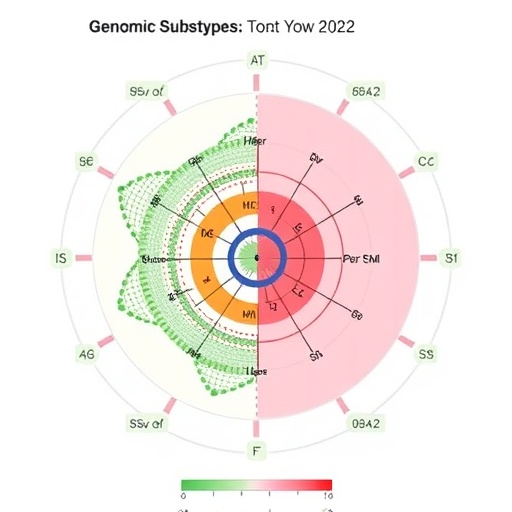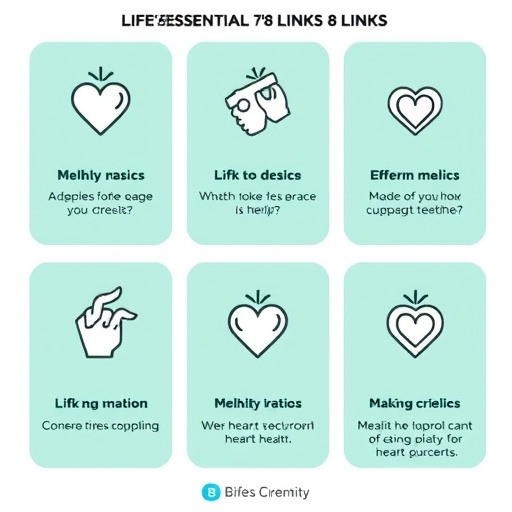Researchers at Dana-Farber Cancer Institute, in collaboration with renowned institutions such as The Broad Institute of MIT and Harvard, Google, and Columbia University, have unveiled an innovative artificial intelligence model named EpiBERT. This groundbreaking model has been specifically engineered to predict gene expression across diverse human cell types, ultimately advancing our understanding of regulatory genomics. By decoding the intricate cellular landscapes, this study offers significant insight into how genes are expressed, regulated, and influenced within various contexts.
The allure of EpiBERT arises from its deep learning foundation, drawing inspiration from BERT—a model originally developed for natural language processing. Just as BERT learns from vast textual data to create coherent sentences, EpiBERT has been trained on a substantial genomic dataset encompassing hundreds of human cell types. The underlying mechanics involve feeding the model with whole genomic sequences, which span approximately 3 billion base pairs, along with intricate maps of chromatin accessibility. Such maps reveal which sections of the DNA are unwound and transliterated into biological function by the cell.
The initial training phase of EpiBERT focused on establishing the relationship between DNA sequences and chromatin accessibility within specific cell types. This foundational learning plays a critical role in the model’s subsequent ability to predict the activation of particular genes, providing valuable insights into cellular behavior. By accurately identifying regulatory elements—segments of the genome acknowledged by transcription factors—EpiBERT develops a generalized predictive framework, or “grammar,” for gene regulation across various cell types.
This regulatory framework operates similarly to how a language model like ChatGPT constructs meaningful linguistic patterns by sifting through extensive text examples. The capacity of EpiBERT to comprehend chromatin accessibility not only enables it to predict functional bases but also allows it to estimate RNA expression levels for previously unobserved cell types. This capability opens new avenues for exploring how different cells respond to internal and external stimuli in a very nuanced manner.
EpiBERT further enriches the field of regulatory genomics by addressing an elementary yet profound question: What distinguishes one cell type from another if all cells contain the same genome sequence? The answer lies predominantly in the regulation of gene expression—the timing, extent, and specificity with which genes are activated. Approximately 20% of the human genome codes for various regulatory elements that orchestrate these expression patterns; however, the precise locations and functionalities of these regulatory codes remain largely unexplored. By leveraging EpiBERT’s predictive power, researchers can shed light on these crucial elements that govern cellular identity and function.
The implications of this research extend beyond basic biological insights, potentially paving the way for breakthroughs in our understanding of human diseases. The understanding gained from the EpiBERT model may illuminate how mutations in regulatory elements disrupt cellular function, contributing to pathological conditions such as cancer. By elucidating the underlying mechanisms that dictate gene regulation, EpiBERT may help identify novel therapeutic strategies for tackling diverse cancers and other genetic disorders.
EpiBERT’s development was made possible through an impressive collaboration backed by significant funding sources. Organizations such as the Broad Institute, the Novo Nordisk Foundation, and the National Genome Research Institute offered their financial support, while Google provided vital computational resources with its Tensor Processing Unit (TPU) technology. This collaborative effort underscores the necessity of combining expertise from multiple disciplines to tackle the complex challenges within modern genomics.
As we delve into this study, the methodology employed in constructing and validating the EpiBERT model becomes clear. By utilizing a multi-modal approach, researchers harness various types of data—genomic sequences, chromatin state information, and expression profiles—enabling the model to perform cell type-agnostic predictions. This methodology not only ensures versatility in its applications but also enhances its relevant predictive accuracy across a broad spectrum of biological contexts.
Additionally, the cutting-edge nature of EpiBERT highlights the transformative impact of artificial intelligence in life sciences. Models like EpiBERT not only exemplify the potential for AI to revolutionize our insights into biological systems but also facilitate new research methodologies that can be readily adapted across various scientific disciplines. The insights gleaned from EpiBERT could benefit fields extending well beyond genomics alone.
In conclusion, the unveiling of EpiBERT marks a significant milestone in the field of molecular biology, merging the realms of artificial intelligence and genomics. With its promise to enhance our comprehension of gene regulation, EpiBERT is poised to contribute to ongoing research efforts that unravel the complex narrative of human health and disease. As researchers continue to parse the vast complexities of regulatory networks, EpiBERT stands as a testament to human ingenuity, bridging the gap between computational prowess and biomolecular understanding.
The successful application of EpiBERT paves the way for future research endeavors that aim to decode the complexities of gene regulation further. By building on the foundations laid by this model, subsequent studies might refine our knowledge of how regulatory elements function in health and disease. The ongoing collaboration between research institutions is crucial in ensuring that the powerful tools developed will be readily accessible to a global scientific community, thereby fostering innovation across the life sciences.
As EpiBERT continues to be utilized in various research projects, the anticipated discoveries will not only deepen our understanding of cellular mechanisms but will also hold the potential to transform clinical practices by providing a more comprehensive approach to genetic and epigenetic research. These advancements reinforce the significance of interdisciplinary collaboration in propelling the boundaries of current scientific understanding.
In summation, EpiBERT exemplifies the convergence of artificial intelligence and genomic research, fostering hope for groundbreaking developments in medical science. With ongoing research initiatives, the insights gained from EpiBERT will be instrumental in tackling future challenges posed by genetic diseases, further establishing its role as a key player in the evolving landscape of genomic research.
Subject of Research: Gene expression and regulatory genomics
Article Title: A multi-modal transformer for cell type agnostic regulatory predictions
News Publication Date: January 29, 2025
Web References: Cell Genomics
References: N/A
Image Credits: Courtesy of Dana-Farber Cancer Institute
Keywords: EpiBERT, regulatory genomics, gene expression, artificial intelligence, transcription factors, cancer research, chromatin accessibility, deep learning, molecular biology, genomics.
Tags: AI in regulatory genomicsartificial intelligence in healthcarechromatin accessibility mapscollaboration in genomic researchDana-Farber Cancer Institute researchdecoding cellular landscapesdeep learning in genomicsEpiBERT model for gene expressiongene regulation across cell typesinnovative genomic modelspredictive analytics in biologyunderstanding gene expression mechanisms





